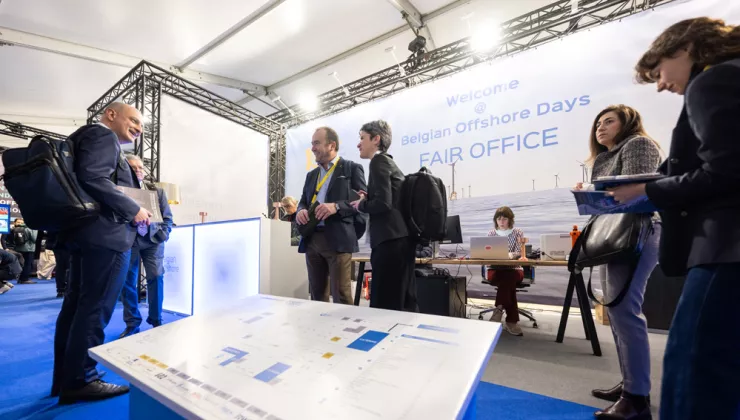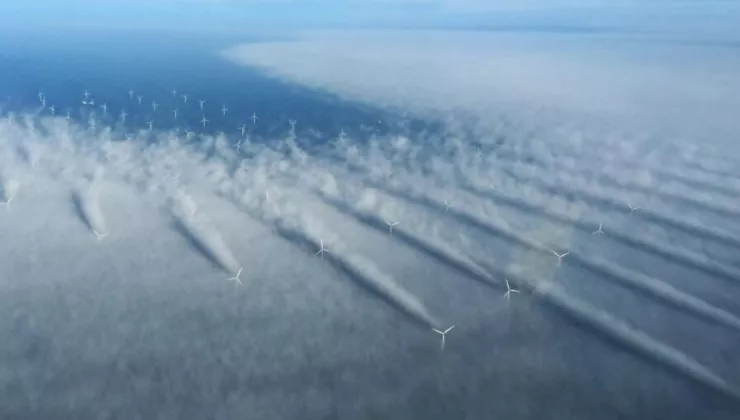In the wake of offshore wind turbines
Simulations are an important tool in order to accurately estimate the production of a wind farm. In this way, an accurate business case for a wind farm can be built even before this wind farm is actually commissioned.
An important factor are the power losses due to wake. The wake effect slows down the inflow, resulting in lower electricity production. Different models are available to determine this effect. You can see an example of this below.
However, existing wake models underestimate certain aspects such as far wakes and blocking effects. To this end, Cloud4Wake is developing methods to calibrate the parameters of wake models based on various data sources, including a scanning LiDAR.
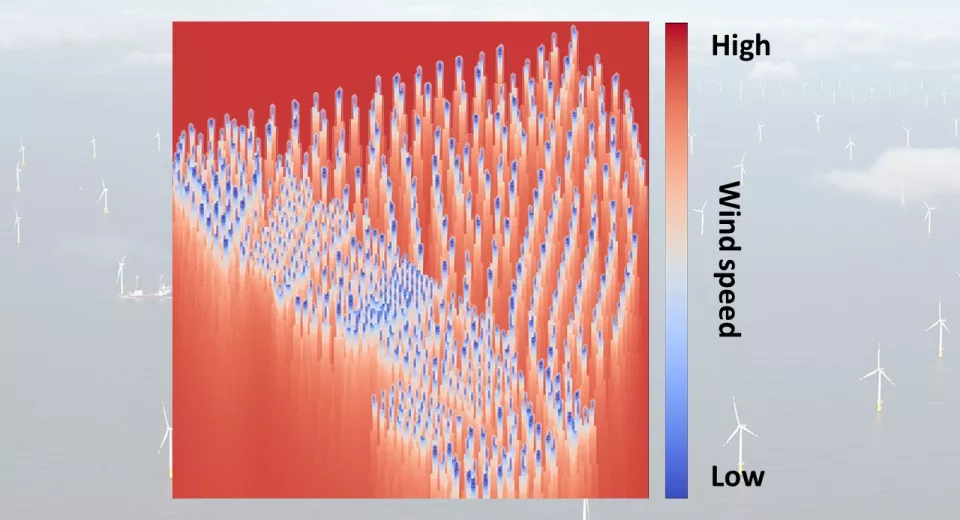
Scanning LiDAR
LIDAR stands for LIght Detection And Ranging and is a technology that determines the distance to an object or surface by means of laser pulses. Lidar works on the same principle as radar: a signal is emitted and later received by reflection.
Different types of LIDAR are used within the wind industry. Nacelle LiDARs are the most widely used and allow to measure wind speed at distances less than 1 km. In this way it can be independently verified whether the wind turbine meets the specified specifications.
However, measurements at these short distances cannot be used to validate the wake models mentioned above. A scanning LiDAR is used for this. It can measure wind speeds up to a distance of 10 km.
The intention is to install this LiDAR at various locations within the Belgian North Sea in order to arrive at a global, calibrated wake model.
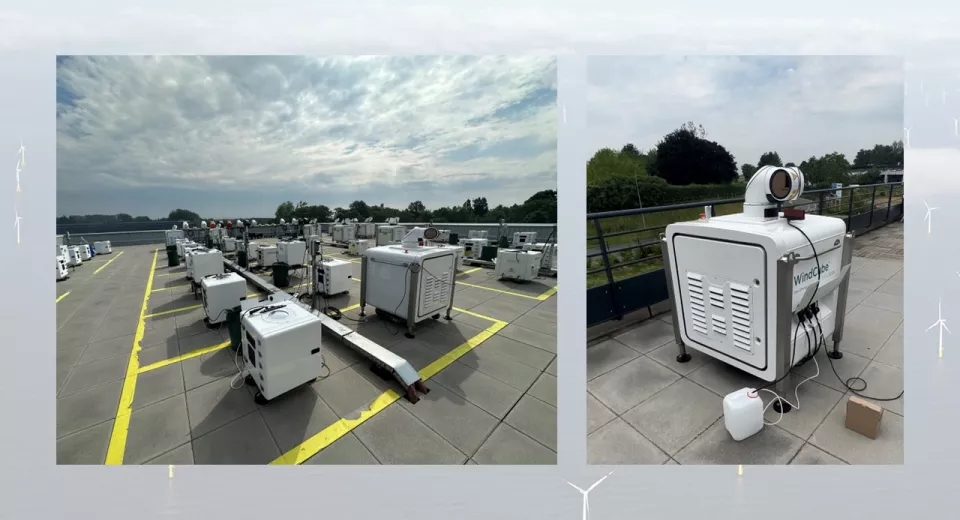
Training
To become familiar with the scanning LiDAR, a two-day training was organized by Vaisala. The purpose of this training was to demonstrate the practical installation and to discuss the various measurement settings of the device.
Above you can see the validation setup of the device. The measurements of the device are compared with certified measuring devices. After this, the device was moved to another location to practice installation and obtain the necessary installation certification.
VUB will first configure this scanning LiDAR onshore so that people can gain experience with certain aspects of the device, such as data transfer, connectivity and maintenance. In parallel, an offshore measurement campaign is planned with the wind farm operators in the consortium.
In a second phase, VUB will install the device offshore and make the resulting data available to the academic partners within the project.
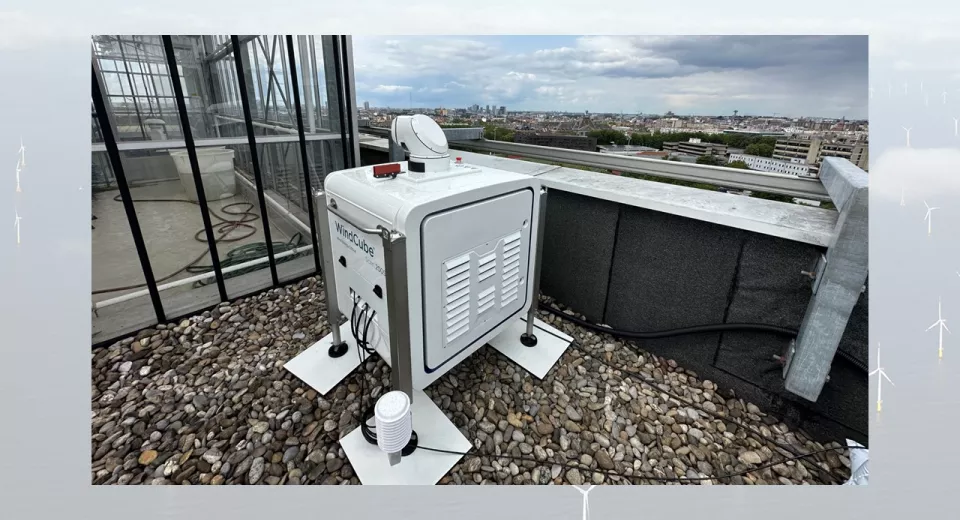
Background
The Cloud4Wake project aims to gain more insight into the wake effects of wind turbines so as to improve the design of offshore wind farms.The project partners are VUB; KU Leuven; Sirris; and von Karman Institute for Fluid Dynamics.
The project is facilitated by Blue Cluster and receives financial support from Flanders throuh Flanders Innovation & Entrepreneurship (VLAIO).
